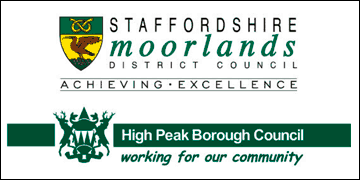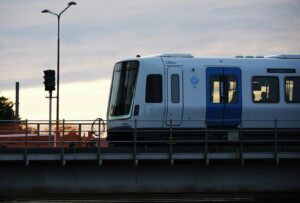Lea Castle Village, an ongoing Homes England development, has gained Build with Nature accreditation, which is voluntary scheme that sets out standards for high quality green infrastructure at each stage of the planning process.
The former Lea Castle Hospital site, near Kidderminster, is surrounded by woodland which is home to a diverse range of plant and animal species, and the development aims to work in harmony with its setting.
Homes England worked with partners at Worcestershire Green Infrastructure Partnership (WGIP) and Borough and County ecologists to develop a framework for green infrastructure at the site, proposing measures in the outline planning application which would safeguard and enrich the existing environment.
Work started on the site in October 2020 to deliver 600 new homes, and the developer Vistry Partnerships have worked with Homes England, local councils, the WGIP and specialist consultants to ensure the new Lea Castle Village development meets Build with Nature standards.
It is expected that around 40% of the wider site will consist of green infrastructure, with the aim of delivering a 10% biodiversity net gain and securing further Build with Nature accreditation.

Lucy Blasdale, director of development at Homes England, told NewStart: ‘Lea Castle is a great example of how partnership working can support housing developments to protect and enhance green infrastructure for the benefit of people and places.
‘The unique nature of the site gave Homes England a great opportunity to work with the Worcestershire Green Infrastructure (GI) Partnership and local authority officers to ensure the protection and enhancement of woodland, biodiversity and recreation were at the heart of plans for the development from the outset.
‘Creating a framework for green infrastructure and stipulating that the developer must seek Building with Nature accreditation meant we could work together to support Vistry through the process – creating a community that goes beyond statutory requirements to deliver a high standard of green infrastructure for people and wildlife.’
The site is home to a number of European Protected Species of bat, and as some of the redundant buildings due for redevelopment were roosts for the animals, replacement roosts were needed elsewhere on the site.
A redundant substation was also converted, with doors removed and blocked up and hanging tiles added to create crevices for the bats, with information boards to be added to explain to residents the importance of the bat roosts.
All existing tree groups and woodland at the site’s edges have been retained, as a dormouse nest has previously been found on the site so it was important to maintain existing commuting routes for the species.
In related news, to address the climate crisis and rising demand for housing, the Welsh government has doubled its spending on social housing for rent, committing an initial £250m in the coming year for 20,000 new low carbon homes.
Photo supplied by Homes England



















Leave a Reply